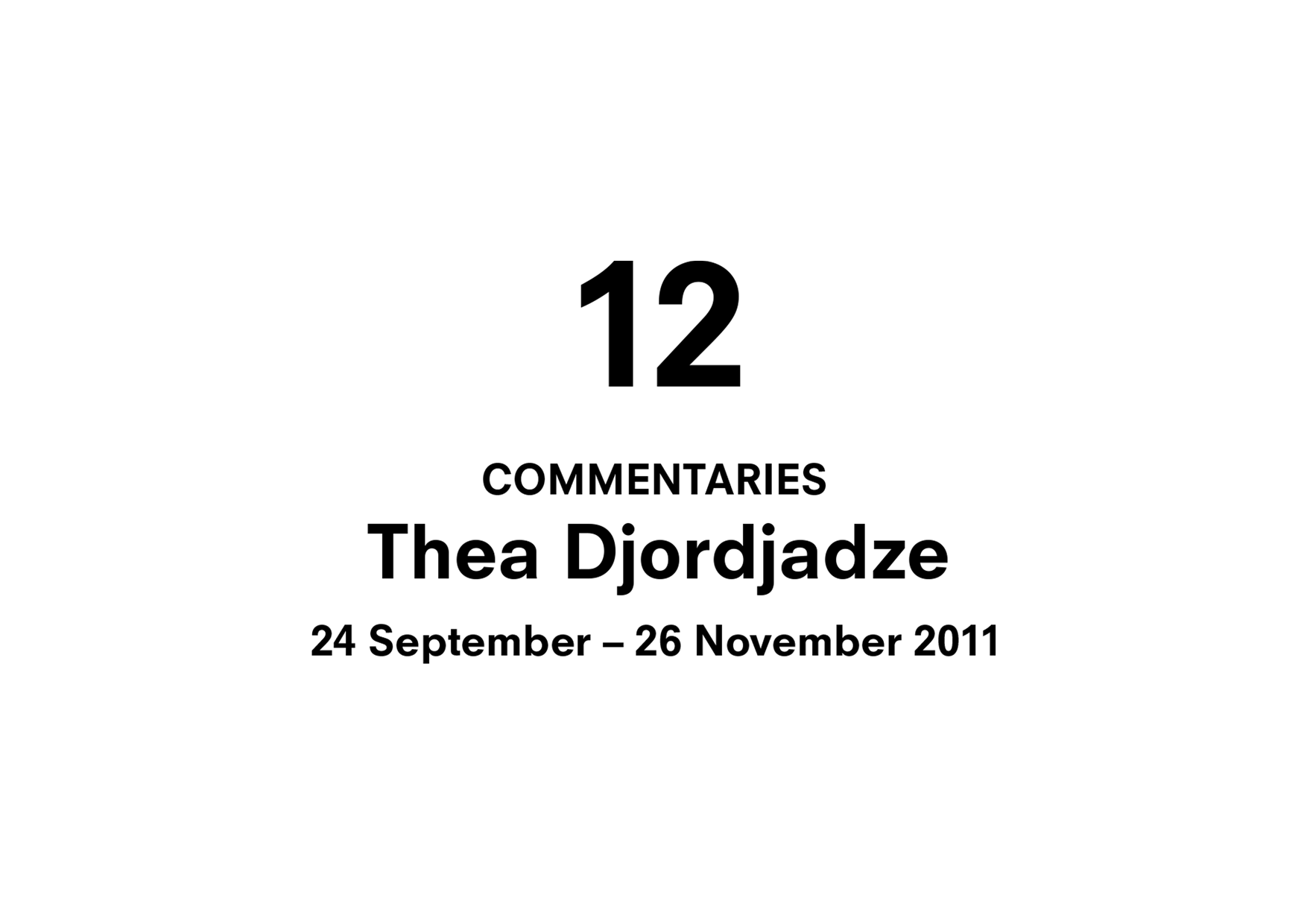Thea Djordjadze, 'Untitled' (2010). Paint, concrete, plaster, sponge © Thea Djordjadze. Courtesy Sprüth Magers, Berlin / London.
Djordjadze’s sculptures range from intimate hand-held objects to large architectural forms. Often referencing the body through the suggestion of clothing or furniture, her sculptures allude to familiar forms through their scale, shape and surface. Despite this familiarity, her work often appears to come from another time or place, or to suggest a previous existence or forthcoming use.
Thea Djordjadze – 'Lost Promise in a Room', installation view, The Common Guild (2011).
Working with a range of commonplace materials such as plaster, cardboard, wood and fabric, Djordjadze creates fragile, hand-made objects that appear partially constructed and partially destroyed. Djordjadze presents these hand-made objects alongside found items such as photographs, carpets and clothing suggesting ritualistic use or religious shrines. By utilising display mechanisms like shelves, plinths, tables and cabinets within the work she aligns the objects with something between the ethnographic museum and the fetishised collection.









